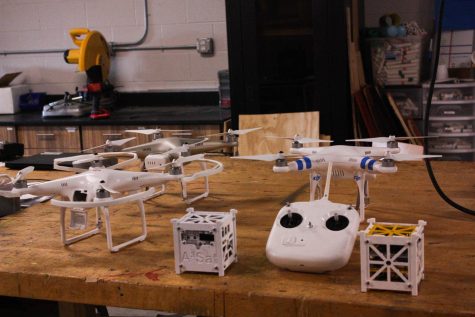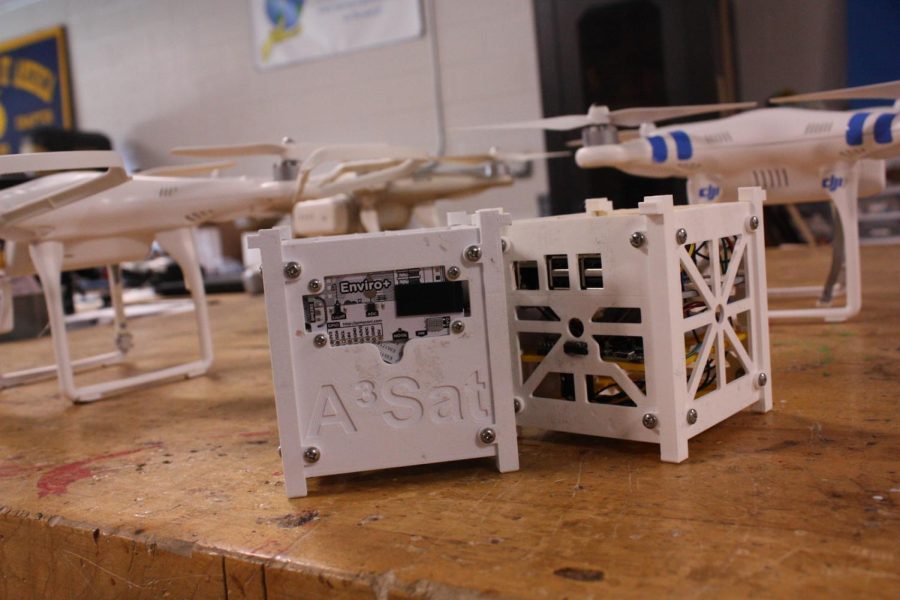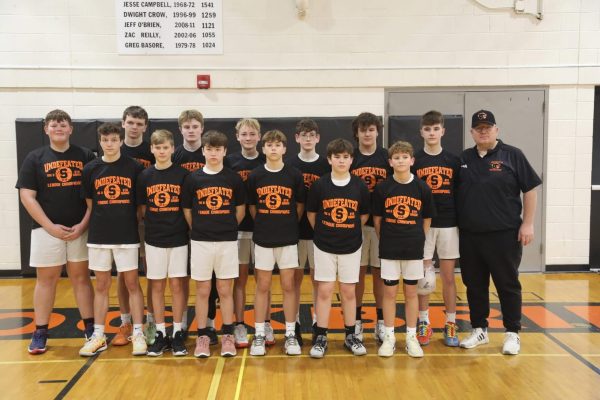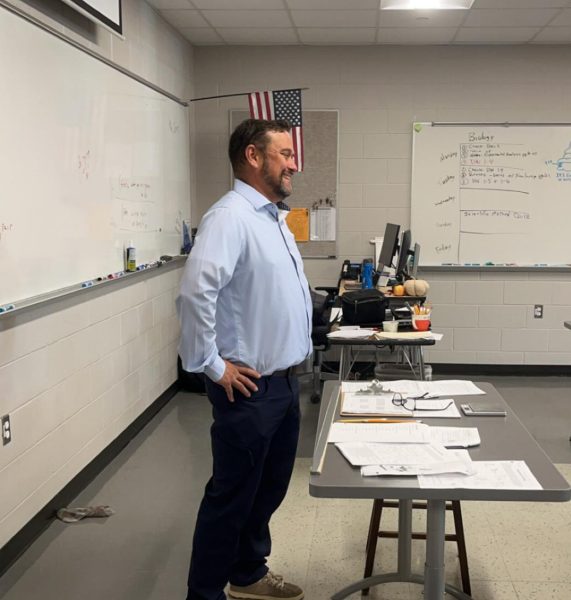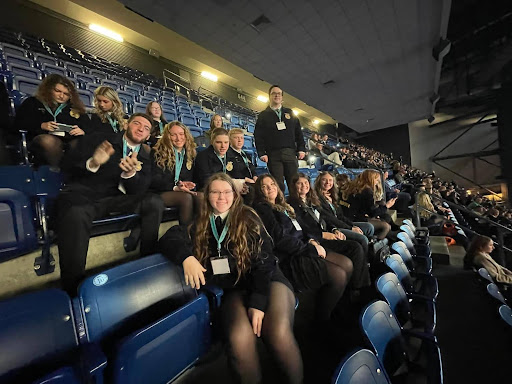The Inventeam’s Small Satellites
Each satellite contains two cameras, a battery pack, a Raspberry Pi micro controller, a duplexer, which works together with the two cameras, and a set of environmental sensors, which will read temperature, barometric pressure, as well as a few other sensors. It will be fixed with solar panels before it is launched to let it last a little longer.
The Stockbridge InvenTeam is making a satellite, called a CubeSat, to take photos from space. The CubeSat is much smaller than a full size satellite, it is a 10cm cube, the project only started about a month ago. The CubeSat costs about $250 to make, much cheaper in comparison to the cost of making a larger satellite.
“The whole idea behind building these are a lot less expensive than launching a full size satellite. So people can watch these for doing different types of research and testing technology at a lot lower cost point than if you build a full scale satellite,” said Robert Richards, head of the team.
The satellite will be programmed to take photographs, and may be used to monitor sea level rise by comparing photographs taken at the same coordinates and at the same altitude, then comparing the change over time. The satellite may also be used to take photos of lunar and solar eclipses.
“We hope to, sometime this spring, fly it up in a drone, and then maybe sometime next year, the class coming up, wants to actually send it into space with like a rocket or something, and we hope to learn more about climate change,” said Brooklyn Rochow, a member of the team.
While the CubeSat costs about $250 to make, launching it costs a considerable amount more to get NASA to launch the satellite. NASA will usually send many of these small satellites up to the ISS alongside supplies, or with a larger satellite, where they will be deployed. In order to communicate with the CubeSat, students on the InvenTeam are making a user interface and a ground station, unfortunately, the school is not making it easy to make those systems. Richards hopes to go back to American Samoa to help the kids there build some of these small satellites.
